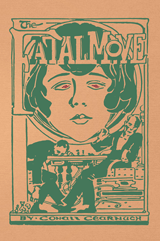The Fatal Move and Other Stories by Conall Cearnach
Swan River Press, 2021 (reprint, originally published in 1924)
ISBN: 978-1-78380-037-7
Available: Hardcover ( Swan River Press )
Reprinted for the first time in nearly one hundred years, The Fatal Move is a slim collection of six ghostly tales penned by Conall Cearnach (the pseudonym of F.W. O’Connell, a peculiar and versatile Irish clergyman and scholar).
Thus, lovers of ghost and supernatural stories have the opportunity to get a taste of a different author rather than keep reading the classic works of the usual suspects.
The title story, “The Fatal Move” effectively portrays two bachelor friends, both passionate chess players, in love with the same woman. In a final chess game, an ingenious trick bound to bring death to one of the players will select the survivor(and winner of the woman’s heart).
The excellent “The Fiend That Walks Behind” describes the obsession of a psychiatrist whose fame has usurped that of the real author of a scientific discovery, and becomes the object of a paranormal haunting and vengeance.
“The Homing Bone”, a traditional type of ghost story– featuring an anatomist stealing a femur from a grave site– is so well-told it entices the reader despite its predictable outcome, while “Professor Danvers’ Disappearance” is an intriguing, clever mystery, with a supernatural veneer.
The volume is enhanced by a number of quite enjoyable short essays by the author, addressing topics such as dreams, sleeplessness, nervous children, and the power of languages, plus an Irish alternative view of Dante’s Divina Commedia, “ The Vision of Merlino”. The book is prefaced by an exhaustive, learned introduction by Reggie Chamberlain-King. “F.W. O’Connell: Master of Strange Tongues”.
A delightful change from the usual stuff published nowadays.
Reviewed by Mario Guslandi









Follow Us!